#National Archive Of Records
Text

Navajo papoose on a cradleboard with a baby lamb, Window Rock, AZ, 1936. 🐑
Records of the Bureau of Indian Affairs (NARA ID 519160).
#Native American Records#Native American#Navajo#Bureau of Indian Affairs#National Archives#Research#History#Records
428 notes
·
View notes
Text
Stop the presses, the best LinkedIn post just dropped

@heckyeahnationaltreasure
#national treasure my beloved#benjamin franklin gates#ben gates#national treasure#nara#national archives and records administration#april fools
62 notes
·
View notes
Text
Never mess with an archivist.
327 notes
·
View notes
Note
Are Presidential libraries for all ex presidents mandatory or more customary?
It's not mandatory to build a library, but all Presidents are required to preserve the records of their Administration, and that usually is done by building a library under the auspices of the National Archives. Building a library or museum or foundation is also a way for a former President to shape their legacy and have a base for their post-Presidential activities and activism.
17 notes
·
View notes
Text
Shakespeare's red cloth for King James I's coronation
Date: 15 March 1604
Catalogue reference: View the recordLC 2/4/5in the catalogue
In 1604, following the death of Queen Elizabeth I the previous year, Shakespeare’s company were invited to take part in the procession marking King James I’s accession to the throne. This document records the issue of 4.5 yards of red cloth to Shakespeare and to others of his company – by this date known as the King’s Men – to wear at the royal entry of King James I into London.
The ceremonies had been postponed from the previous year because of the plague. The allocated measures of cloth given in the document are detailed in one of two columns, with a distinction between scarlet and red cloth. The former was usually more expensive than the latter.
Under the King’s patronage and the Jacobean era, Shakespeare and his company thrived. Macbeth, set in King James’s kingdom of Scotland and relevant to his interest in witchcraft, was written in 1606.
#shakespeare#william shakespeare#archives#musuems#national archives#uk#manuscript#records#red cloth#james i#manuscripts
19 notes
·
View notes
Text

Time Piece is one of those lesser sighted antiheroes who refuses to explain where or when she came from.
She’s got very modern sensibilities, but her speech is peculiarly Early Modern. She’s just as likely to break into as museum as she is to stop a bank robbery, but in her defense she (usually) doesn’t keep whatever she borrows from the museums. And when she gets into fights, her relatively shot distance time traveling doesn’t seem to be under her control, despite her cool additude mostly covering for it.
What she keeps on the down low, despite her name, is that she’s not just your standard teleporter. By touching an object Fluffy,” as her friends call her, can jump to the most important time in an objects history, part or present.
However, if she jumps back to her present using the same object that took her to that point in history she jumps out of the universe in which that action took place, meaning that she’s the only one who could confirm if she’s killed baby Hitler yet (or as she likes to phrase it “Only I know how many times have I’ve killed that bastard.”)
#I have backstory for her. I have thoughts. you don’t get to know those thoughts#well no I’ll give you one detail she’s a massive conspiracy theorist and it’s entirely unclear how genuine it is#she has stated that her break in to the National Archives and Records Administration Building was highly successful#she has not stated what her goals where exactly.#oh also#she can make her teleportation slightly more predicable by setting up items in advance but. where’s the fun in that.#my art#my ocs
4 notes
·
View notes
Text

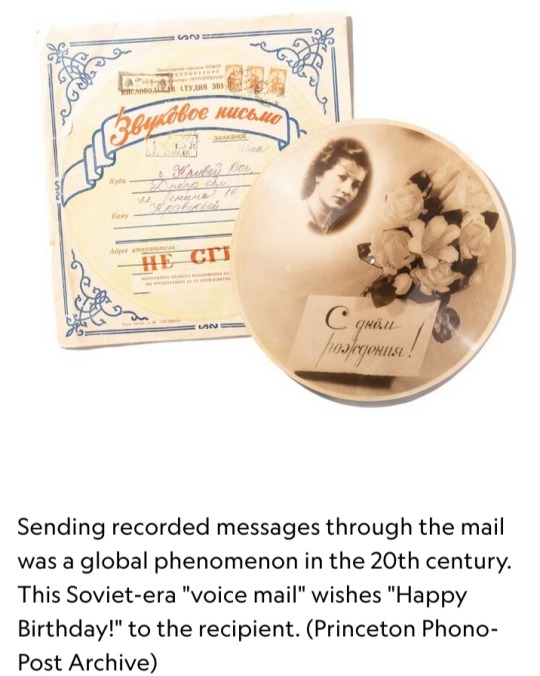
“Hello Mother, Dad, and Blanche,” a quiet voice says above the cracks and pops of an old vinyl record, which has clearly been played many times over.
“How’s everything at home? I’m recording this from Dallas…from this very little place where there are pinball machines and many other things like that…”
The disc is small, seven inches across, dated October 1954.
The faded green label shows that the speaker’s name is “Gene,” the recording addressed to “Folks.”
Gene suggests in his minute-long message that he is traveling — “seeing America” — and tells his family not to worry about him.
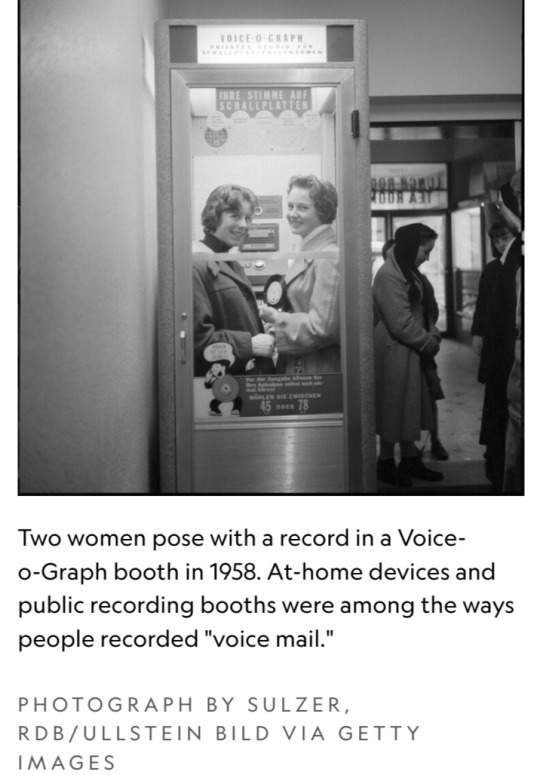
“I should complete my trip sometime around Thanksgiving,” he continues in a second recording made in Hot Springs, Texas, not too long after his first one.
“I hope you received my letter and I, in turn, hope to receive some of the letters that you sent me. It’s been a very long time since we’ve corresponded, and I’m looking forward to hearing from you very, very much.”
This largely forgotten sound is one of the world’s early “voice mails.”
During the first half of the 20th century, these audio letters and other messages were recorded largely in booths, pressed onto metal discs and vinyl records, and mailed in places all over the world.
Best known today for playing music at home, record players were then being used as a means of communication over long distances.
Reach out and touch someone
The idea of transporting a person’s voice had loomed large in the human imagination for some three centuries before it was finally achieved with the invention of the phonograph in the late 19th century.
Historical documents from the Qing Dynasty in 16th-century China suggest the existence of a mysterious device called the “thousand-mile speaker,” a wooden cylinder that could be spoken into and sealed, such that the recipient could still hear the reverberations when opening it back up.

Top: A Kodisk horn and recording stylus attachment in the Princeton Phono-Post Archive was used in the early 1920s for home recordings on pre-grooved blank metal discs using a normal gramophone.
Bottom: A Gem Recordmaker attachment at the Princeton Phono-Post Archive was used in the 1950s for children to "make your own permanent records" on blank six-inch discs using their own gramophone at home.
When Thomas Edison invented the phonograph in 1877, he envisioned a device that could reproduce music and even preserve languages.
He saw, in its earliest uses, the potential to transform business, education, and timekeeping.
He even imagined a so-called “Family Record” — a “registry of sayings, reminiscences, etc., by members of a family in their own voices and of the last words of dying persons.”
But correspondence was at the top of his mind: Edison thought his invention could be used for dictation and letter writing.
In the late 19th century, handwritten letters were the most common form of everyday personal communication.
The telegram, which later became popular in the early 1900s, was used for shorter, urgent messages.
While Alexander Graham Bell made the first transcontinental telephone call from New York to San Francisco in 1915, long-distance calling remained expensive and inaccessible to most ordinary people until the 1950s.
Voice-O-Graph
The gramophone, a later form of the phonograph developed by Emile Berliner in 1887, provided a first possibility for recorded sound being used for long distance communication.
It made recording and playback possible on discs, which were easier to store, reproduce, and send.
The earliest known record to have been put in the mail as a means of correspondence would be sent in the early 1920s, but the practice of sending voice mail really got going across the world in the 1930s and 1940s.
It was personal and affordable as long as customers could find a recording booth or home device.
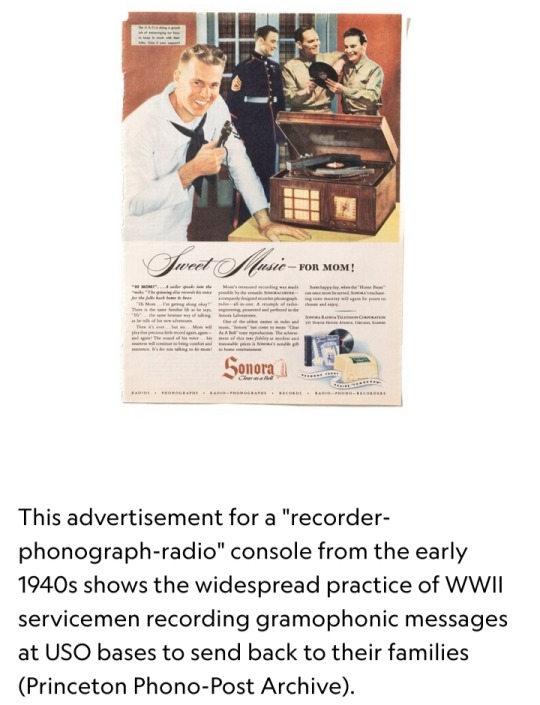
In the early 1940s, the American company Mutoscope rolled out the Voice-O-Graph machine, which vastly popularized voice mail in the United States.
It was a tall wooden cabinet, shaped not unlike a modern-day photo booth, that declared, on one side: RECORD YOUR OWN VOICE!
Invented by Alexander Lissiansky, these recording booths were marketed as novelties and set up at common gathering places: amusement parks, boardwalks, tourist attractions, transportation hubs, military bases and U.S.O. events.
There was a Voice-O-Graph machine at the top of the Empire State Building, on the piers of San Francisco, and by the Mississippi River in New Orleans.
The speaker entered the Voice-O-Graph, inserted a couple of coins, and had a few minutes to record a message.
Then, out popped a record the size of a 45-rpm single that was not only durable enough to be played multiple times, but also flimsy and lightweight enough to send in the mail for little more than the cost of a regular letter.
Oftentimes, the envelopes themselves would come included.
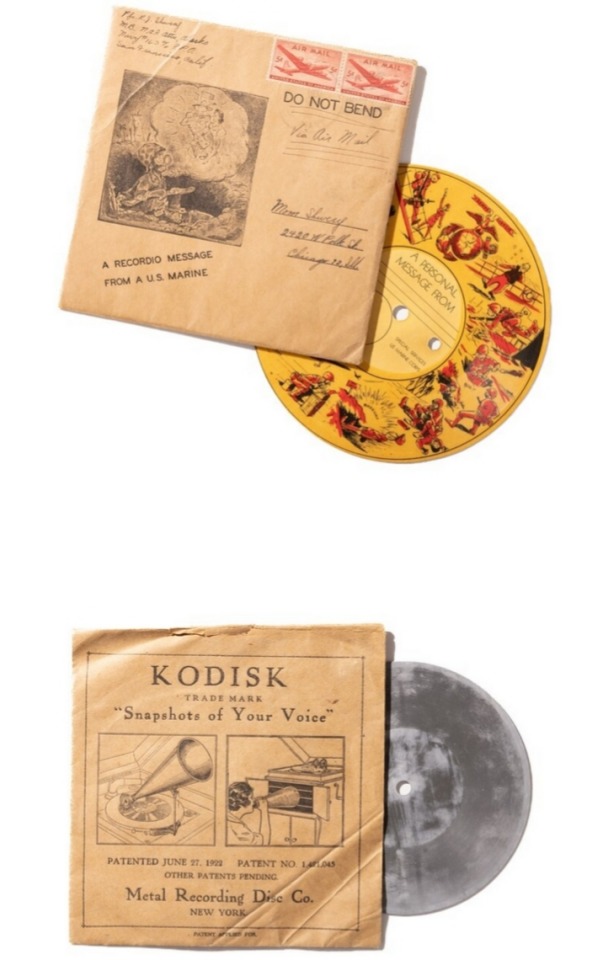
Top: A soldier sends a Christmas greeting to his mother in Chicago.
The envelope, which came with the record, depicts a soldier anxiously imagining his wife with another man in his absence (Princeton Phono-Post Archive).
Bottom: Pre-grooved metal discs were used for domestic gramophone recordings in the early 1920s.
The paper sleeve illustrates the two methods of recording: one, depicted on the right, involved using a megaphone to shout into the phonograph's horn; the other method, depicted on the left, involved using a Kodisk-branded external horn and recording stylus, which would be attached to one's home gramophone and is shown in another image above (Princeton Phono-Post Archive).

Top: A “Recordio” home-recording demonstration disc from the 1940s illustrating five different models of radio-recording-playback consoles made by the Wilcox-Gay Corporation, ranging from massive living-room consoles to portable “airplane type” suitcase versions (Princeton Phono-Post Archive).
Bottom: Wilcox-Gay Recordio demonstration picture disc featuring the violinist and radio star David Rubinoff (1897-1986) and his $100,000 Stradivarius making a recording at home (Princeton Phono-Post Archive).
Photographs by Rebecca Hale, NGM Staff
Words of love
The messages people sent would range in emotion — from excitement to nervousness, joy to embarrassment.
Travelers would make recordings to update family and friends on long trips.
Especially during World War II, where there were recording booths on military bases in nearly every theater of the conflict, soldiers used voice mail to reassure loved ones with the sound of their voice, even if some them would never return home.
There are countless “voice mail valentines,” surprisingly intimate audio love letters.
Many of the messages, sent from far away, express longing.
“You keep your chin up,” a voice named Leland tells his wife in a recording dated 1945, from a booth in New York City.
“All of you keep those chins up. Mike, all of us will all be home, be home where we can pick up, and carry on as we did before.”
In one recording made in Argentina in the 1940s, a man plays the violin before he recites a lullaby.
“Sleep, sleep my darling girl,” the man says. “It’s getting late.”
Phono-Post archive
Back then, families could listen to the messages on repeat — gathering together around the record player whenever one arrived.
They could play it proudly again anytime there were guests, but with each play, the needle would scrape away at the delicate grooves until the message could hardly be heard any longer.

Today at Princeton University, professor and media theorist Thomas Levin is dedicated to preserving these sounds of the past.
He maintains the world’s only archive dedicated to what he calls the “Phono-Post.”
At the height of the phenomenon, there were perhaps thousands of Voice-O-Graph machines in America and many more recording stations across the world.
“Millions of these audio letters were sent across the United States, South America, in Europe, in Russia, in China,” Levin says.
Levin’s office is crammed with many of the items he has collected over the years, including books, posters, and other ephemera—as well as, of course, the records themselves.
Levin has already digitized some 3,000 of the discs, all of which are tucked into clear plastic sleeves and carefully catalogued.
He keeps them filed into cabinets and stackable storage bins in a temperature-controlled room.
Thousands more records lie waiting to be processed in a nearly seven-year backlog that keeps growing as Levin continues collecting.
He employs AI bots that constantly comb through eBay pages and bid for items on his behalf.
Sometimes, he will come across people selling, knowingly or unknowingly, the voice of a relative.
“I write to them and I say, you’re selling the voice of your grandfather?’” Levin says.
“There’s not a sense of the value of the voice, such that people are willing to part with these objects.”
Still, he offers to share an MP3 file of the recording with them, and for that, they are often very grateful.
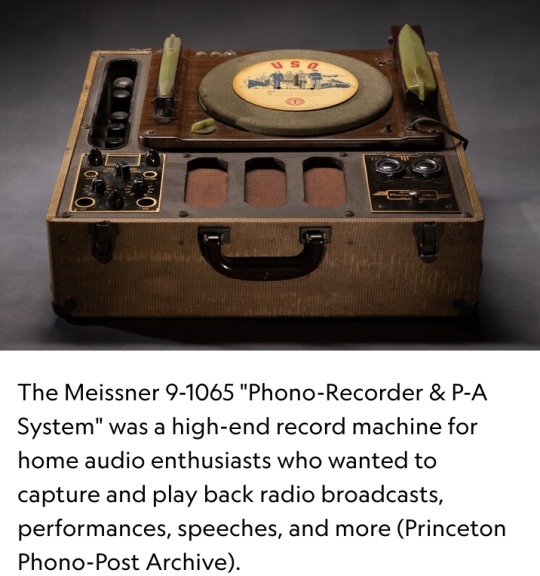
Voices of the Past
For the most part, there aren’t many celebrity voices stashed away in the Princeton Phono-Post Archive.
“The bulk of the recordings in this archive are of very unextraordinary people articulating desires, wishes, fantasies, of a very quotidian sort,” Levin says.
They are enormously telling, if one is willing to listen closely.
Much like paper letters, these audio missives can also reveal insights about particular moments in history through the accounts of individual lives lived within them, but with added layers of sensory detail.
Historical linguists are particularly interested in “voice mail” because it provides some of the earliest-ever recorded samples of how regular people spoke — their conversational vocabulary, their pronunciation and accents, their sentence structure, their intonation.
“There’s no editing. There’s no cleaning up,” Levin says. “Once the recording starts, it will run until it ends, whether you have something to say or not.”
He smiled. “If you don’t have anything to say, that says something too.”
The advent of cassette tapes in the 1960s meant that services like the Voice-O-Graph quickly fell out of fashion.
(For a few decades, people were sending long distance messages on audiocassettes, too — a practice that became particularly common for U.S. soldiers deployed in the Vietnam War.)
But this voice mail phenomenon, while short-lived, holds a significant place in the history of global communication.
“What we’re recovering now are the remnants of a chapter of media history, a cultural practice, that was huge, ubiquitous,” Levin says, “but has now been forgotten.”
For many people, these recordings were the first time they had ever recorded their own voice.
They sound nervous, even awkward, while others even sound like they are reading from a piece of paper.
Some, when faced with their very first self-recording, confronted the realization that they were leaving a highly personal trace that would likely outlive them.
“People strangely, but with remarkable regularity, talk about death,” Levin says.
“They’re writing to a future.” He pauses. “And one thing is known about that future: that they will not be a part of it.”
#voice mails#audio letters#old vinyl record#record players#phonograph#Thomas Edison#telegram#handwritten letters#Alexander Graham Bell#gramophone#Emile Berliner#Mutoscope#Voice-O-Graph#Alexander Lissiansky#Phono-Post#Princeton Phono-Post Archive#Historical linguists#cassette tapes#National Geographic
29 notes
·
View notes
Text
Former President Donald Trump, who is charged with stashing national security secrets at Mar-a-Lago and obstructing government efforts to retrieve them, relied on advice from the leader of the conservative organization Judicial Watch, who convinced Trump that he had the legal right to retain the documents and encouraged him to fight against the Justice Department, The Washington Post reported.
Trump's lawyers repeatedly urged him to return the document remaining at his residence but the former president instead turned to Tom Fitton, who doesn't have a law degree but has remained vocal about Trump having the right to keep the documents he took with him at the end of his presidency.
"If Trump had simply given these documents back, when he was first asked, there would have been no jury subpoena, there would have been no search warrant, and there would have been no criminal charges," former U.S. Attorney Barb McQuade, a University of Michigan law professor, told Salon. "In fact, in each of those steps of the investigation, if Trump had returned the documents, there likely would not have been a criminal prosecution."
Fitton reportedly argued that the records belonged to Trump, pointing to a 2012 court case involving his organization which he claimed granted the former President the authority to exercise control over the records from his own term in office.
Trump has echoed his claims referring to a ruling in which the judge said it was okay for President Bill Clinton to keep audiotapes of his conversations with historian Taylor Branch during Clinton's White House tenure.
"Under the Presidential Records Act — which is civil, not criminal — I had every right to have these documents," Trump said in a speech Tuesday night. "The crucial legal precedent is laid out in the most important case ever on this subject, known as the Clinton socks case."
But the key difference between the two comparisons is that Clinton's recordings were from his own interviews with a journalist and not presidential records like Trump's, legal experts say.
"The Presidential Records Act distinguishes between 'presidential records' and 'personal records' and required President Trump to preserve White House documents because those are the property of the U.S government," Temidayo Aganga-Williams, partner at Selendy Gay Elsberg and former senior investigative counsel for the House Jan. 6 committee, told Salon.
Even as Trump's advisers urged him to cooperate with investigators in their efforts to retrieve the classified documents he had taken when he departed from the White House, Trump brought up Fitton's name whenever he refused to comply with their advice, sources told The Post.
"Trump all but dared DOJ to indict him," McQuade said. "In order to be even-handed in applying the law to offenders who willfully abuse their power to handle classified information, DOJ really had no choice but to indict Trump."
Despite multiple opportunities to avoid criminal charges, Trump consistently refused to return the presidential documents requested by the National Archives since February 2021, sources familiar with the case told The Post. Trump was not charged for the documents he did return voluntarily.
"The national security documents that President Trump is criminally charged with keeping at Mar-a-Lago and refusing to return were always government records and could not be considered personal records in any reasonable reading of federal law," Aganga-Williams said.
Even as Trump publicly maintained that he was fully cooperating with government officials, his behind-the-scenes communication with Fitton reveals a different story.
In February, after the National Archives acknowledged retrieving 15 boxes of presidential records from Trump, he began receiving calls from Fitton telling him it was a mistake to give the records to the Archives, CNN reported.
One source told CNN that Trump requested Fitton brief his attorneys on the legal argument.
Fitton reportedly told Trump's team that they should never have let the Archives "strong-arm" him into returning them. He then suggested to Trump that if the Archives came back, he should not give up any additional records.
Contrary to Fitton's advice to "completely stonewall the government," Trump did hand over some material in June after a meeting between his lawyers and federal investigators at Mar-a-Lago, according to CNN.
However, investigators later found evidence suggesting that not all classified material had been returned, despite the former president being issued a subpoena. The FBI eventually carried out a search of Mar-a-Lago last August and found over 100 documents with classified markings at Trump's Mar-a-Lago residence.
Trump intentionally deceived his own advisers regarding the contents of the boxes, telling them they only contained newspaper clippings and clothes, seven Trump advisers told The Post. He consistently refused to return the documents even after receiving warnings from some of his most loyal advisers about the potential risks involved.
His actions have mirrored the advice of Fitton – a staunch election denier who promoted conspiracy theories about Dominion Voting Systems and Smartmatic after the 2020 election, according to Media Matters.
Fitton entered Trump's inner circle after he caught the former president's attention, who viewed him as one of the most effective critics of the Mueller probe from his frequent appearances on Fox News, Politico reported.
His media appearances are also similar to Trump's.
In one interview with Politico, Fitton discussed what he perceived as "abuses" of power by the Justice Department and the FBI, labeled the Mueller investigation as "unconstitutional" and asserted that there was sufficient evidence to arrest and prosecute Hillary Clinton. He has built a following by appearing on right-wing networks and filing lawsuits against the federal government alleging bureaucratic corruption.
During one Fox interview, Fitton himself corrected host Jeanine Pirro after she referred to him as a lawyer, and then responded: "You should be, you get more out of courts than anyone I know." But Fitton's limited legal expertise hasn't stopped the former president from seeking advice from him. It's only complicated the role Trump's attorneys play in representing him. It's also left Trump scrambling to find legal representation a day before his court appearance after two of his top lawyers stepped down just hours after a Florida grand jury voted to charge him.
Most recently though, Fitton's advice appears to have led Trump to being charged with 37 counts including alleged violations of the Espionage Act, obstruction and false statements.
#us politics#news#donald trump#republicans#conservatives#2023#classified documents#classified documents probe#fbi#department of justice#jack smith#tom fitton#The Washington Post#Barb McQuade#president bill clinton#Presidential Records Act#Clinton socks case#Judicial Watch inc. v. National Archives and Records Administration#judicial watch#national archives and records administration#Temidayo Aganga-Williams#Fox News
17 notes
·
View notes
Text
youtube
BREAKING: Trump Planned to EXTORT DOJ With Trade of Stolen Classified Docs for Russian Docs
A new bombshell report cites sources close to Donald Trump that before the August 8 search warrant was executed on Mar-A-Lago, he was demanding his team offer the DOJ a trade that he would give back the records he stole if they gave him records relating to the DOJ's Russian investigation. This absurd offer never was acted upon but can be used to show Trump's intent in any potential future criminal case.
#us politics#news#donald trump#trump administration#department of justice#fbi#fbi raid#top secret documents#classified documents#russia investigation#2022#youtube#video#meidas touch#lock his ass up#national archives and records administration
27 notes
·
View notes
Text
love that there's a new soggy David poll because this time ive blocked anyone who said they voted for jon in the last one and now i can go through the notes and pretend that everyone has good takes
#ive filtered all the 'i havent listened to another podcast' magnus listeners...finally....peace..#i DO enjoy the people making arguments for. like. faulkner. hayward. arthur malevolent. juno steel. in the tags#like! im a proud member of david nation but i support your crusades#OH and the folks arguing for. whats his fuck from archive 81 who got turned into a tape recorder#i dont care about him because i thought he was a boring character but i support your cause#literally anyone who has listened to at least one other podcast. you can live today#(i do think juno steel shouldn't quality for the wet podcast man category since he's a lady. but that's just me)#anyway this post to say. hashtag vote david
4 notes
·
View notes
Text

Quanah Parker, a Comanche chief, standing in front of his tent - late 19th century.
Researchers can find information relating to American Indians and Alaska Natives from 1774 through the mid-1990s at National Archives locations throughout the U.S. https://loom.ly/B_zY488
312 notes
·
View notes
Text
Archivists on the Issues: Classified Records, Archives, and Fictional Depictions [Part 1]
Archivists on the Issues is a forum for archivists to discuss the issues we are facing today. Today’s post comes from Burkely Hermann (me), Metadata Librarian for the National Security Archive and current I&A Blog Coordinator. There will be spoilers for each of the books, animated series, films, and other media he will be discussing. This was originally published on February 7, 2023 on the Issues & Advocacy WordPress blog.

High-level overview of National Declassification Center processes, as shown in a post on the NDC blog in 2019
Previously on this blog, Rachel Mattson examined whether police body camera footage is public record or is classified, arguing that it should be a public record. Other blogposts on this blog have examined whether the Senate Intelligence Committee Report on Torture is a Federal or Congressional Record, noted selective declassification by the French government, which declassified over 200,000 records about Vichy government’s collaboration with the Nazis but none about France's occupation of Algeria, and noted the tendency of politicians to avoid documenting their activities and stonewall FOIA requests.
In January 2022, the Director of National Intelligence April Haines argued, in a letter to U.S. Senators Ron Wyden and Jerry Moran that there are "deficiencies" in the current declassification system, and notes the burden of mandatory declassification requirements while the amount of classified material expands. My colleague from National Security Archive, Lauren Harper, noted that Haines, many months later, said that overclassification is a national security threat. Some of these classified records are in the hands of the National Archives, otherwise known as the National Archives and Records Administration (NARA), organized into Top Secret, Secret, and Confidential. Other records are deemed unclassified if they do not meet the existing requirements for classification.
Classification of records in the U.S. has often been outlined in presidential executive orders, beginning with President Truman in 1951. National security generally described as the primary reason for classification. Over the years, rules changed and the role of NARA increased. This has even resulted in a part of the agency dedicated to declassification, the National Declassification Center (NDC), which was established in 2009, in accordance with Executive Order 13526. This went beyond the agency's representation on the Interagency Security Classification Appeals Panel (ISCAP), or the Information Security Oversight Office (ISOO), which oversees the security classification programs in "both Government and industry", and reports to the President annually. The ISOO, role on ISCAP, and NDC, most recently, have given NARA an important position in the entire classified information management process. [1]
Unsurprisingly, NARA has been in the public focus, especially for storing presidential records from the Obama Administration, and afterward. Some politicians have claimed the agency is an "enemy" and have wanted to dismantle it because of NARA's push to return classified records to the public, rather than having the records stored in shoddy locations or controlled by presidents as their personal property. [2] This makes reports, in past years, like in May 2012, that boxes of classified government records disappeared from Washington National Records Center all the more concerning, as it could be representative of a larger trend.
Currently, there are measures in place for declassification of government records, either enshrined in executive orders or provisions of the Freedom of Information Act (FOIA). However, the FOIA system is currently flawed, especially with existence of various exemptions which can be used to redact documents or reject records requests. [3] There are similar issues with Mandatory Declassification Review (MDR) requests. As one government report put it, storage of classified materials is "widespread" across the U.S. government, with NARA storing records from all agencies at central facilities. Even so, some have argued that politicians have neglected the National Archives and failed to "control official secrecy", belaying assumptions about government transparency, and resulting in the crisis which will make it harder for researchers to examine the "state’s inner workings". Recent developments, such as a drop in the annual budget of NARA, attrition, and loss of institutional memory have resulted in the agency having one of the lowest levels of job satisfaction in the federal government. All the while, funding for declassification has decreased and backlogs for declassification have increased. [4]
NARA is not the only archives which handles and processes classified records. There are established procedures for classification of records held by the New South Wales Archives in Australia, British Public Record Office, Taiwanese government, Israeli Defense Force, State Archives of Poland, National Archives of Brazil, South African State Archives Service (later renamed National Archives and Records Service), National Archives of Korea, and National Archives of France. Even the archives of the United Nations has a classification level of Strictly Confidential, necessitating declassification requests, while archival materials over 20 years old are "generally open to the public for research". [5]
As Electronic Records Archivist Amy Wickner argued, archivists have the "power to name and classify," a power which has "material effects on the world". This power can be used to make records more accessible or to make them harder to access. The latter is the case if access is only "granted or refused on an individual basis". At times, more restrictions are imposed because of compliance with professional standards or data within in a record rather than the document itself. This includes including personal data. On the other hand, records which should be publicly available, like agreements between carceral facilities and FamilySearch for indexing of historical records, have a possibility of redaction, despite the lack of personal or sensitive information. [6]
© 2022-2023 Burkely Hermann. All rights reserved.
Continued in part 2
Notes
[1] Čtvrtník, Mikuláš. "Classified records and the archives." Archival Science 22 (2022): https://doi.org/10.1007/s10502-021-09370-3.
[2] O'Rourke, Ciara. "Claims about Obama Foundation keeping classified records in an abandoned warehouse are wrong." Poynter, Oct. 7, 2022; Caputo, Marc. "Barr suggests Trump 'deceived' the government over classified records." NBC News, Sept. 2, 2022; Suebsaeng, Asawin and Adam Rawnsley. "Trump Tells His Lawyers: Get ��My’ Top Secret Documents Back." Rolling Stone, Aug. 23, 2022; Alemany, Jacqueline, Isaac Arnsdorf, and Josh Dawsey. "Inside Trump’s war on the National Archives." Washington Post, Aug. 27, 2022; Legare, Robert. "Archives found 100+ documents with classified marking in first 15 Trump boxes." Yahoo! News, CBS News. Aug. 23, 2022; Kochi, Sudiksha. "Fact check: Archives agency transferred 30 million unclassified Obama records to Chicago." USA Today, Oct. 3, 2022; Derysh, Igor. "'He has the right to remain silent': Legal experts say Trump’s Truth Social post may be 'evidence'." Salon, Nov. 29, 2022; "Press Statements in Response to Media Queries About Presidential Records." National Archives and Records Administration, Nov. 9, 2022; Reilly, Steve. "What the government’s former top classified records overseer sees in the Mar-a-Lago search." Grid, Aug. 10, 2022; Wood, Jennifer. "Donald Trump Just Couldn’t Keep His Mouth Shut And Went Ahead And Confessed: ‘I Did’ Steal Classified Documents From The White House." Uproxx, Nov. 29, 2022; "Fact Check-National Archives and Records Administration says they manage all of Obama’s Presidential records, contrary to claims online." Reuters, Sept. 30, 2022. There have also been cases, like a lawsuit by the conservative legal group, Judicial Watch, against NARA, aiming to declassify Clinton Administration efforts, but their efforts were dismissed by the courts.
[3] "Freedom of Information Act flaws need fixing, experts say." American Bar Association, Aug. 4, 2018; "The media’s problems with FOIA." Reporter's Committee for Freedom of the Press, Winter 2007; Goos, Christian. "Seeking Access to Classified Records: Requesting Mandatory Declassification Review (MDR) versus Freedom of Information Act (FOIA)." ISOO Overview, Oct. 1, 2021.Also of note are pages like the "Overview" webpage on the Records Management Directorate and Army Declassification Directorate, the NSA's page on supposed declassification/transparency initiatives, and a press release about ZL Tech's support of a "records management platform with DOD classified technology".
[4] "Appendix V: Central Storage, Declassification and Destruction" in Classified Information: Costs of Protection are Integrated with Other Security Costs: Report to the Chairman, Information, Justice, Transportation, and Agriculture Subcommittee, Committee on Government Operations, House of Representatives (United States General Accounting Office, 1993), 26; Connelly, Matthew. "State Secrecy, Archival Negligence, and the End of History as We Know It." Knight First Amendment Institute, Sept. 21, 2018. The latter article also says that state secrecy and state archiving began at the same time, around the establishment of NARA and into World War II.
[5] "Standard on the physical storage of State records." New South Wales Archives in Australia, Feb. 2019; Wittner, Laurence. "What I Learned About Governments from Researching Classified Documents." History News Network, Sept. 4, 2022; "The Management Regulations for Classified Archives." Law & Regulations Database of the Republic of China (Taiwan), May 10, 2005; Peterson, Terrence. "The French Archives and the Coming Fight for Declassification." War on the Rocks, Mar. 6, 2020; Makleff, Ron. "Sovereignty and Silence: The Creation of a Myth of Archival Destruction, Liège, 1408." Archive Journal, Aug. 2017; "Public Reference Services." United Nations Archives and Records Management Section, accessed Dec. 5, 2022; Franco, Shirley. "Transparência e opacidade do estado no Brasil: Usos e desusos da informação governamental." The American Archivist 84, no. 1 (2021): 196; Sromek, Teresa. "Teoria i praktyka archiwistyki USA." The American Archivist 83, no. 1 (2020): 177; Harris, Verne and Christopher Merrett. "Toward a Culture of Transparency: Public Rights of Access to Official Records in South Africa." The American Archivist 57, no. 4 (1994): 681-2, 684, 688, 691; Lee, Kyong. "Political Democracy and Archival Development in the Management of Presidential Records in the Republic of Korea." The American Archivist 69, no. 1 (2006): 119-120,129, 134-135, 137-138.
[6] Wickner, Amy. "Recognizing Co-Creators in Four Configurations: Critical Questions for Web Archiving." Journal of Contemporary Archival Studies 8 (2019): 4; Geraci, Noah and Michelle Caswell. "Developing a Typology of Human Rights Records." Journal of Contemporary Archival Studies 3 (2016): 18; Taylor, Claire, Lucia Brandi, Cecilia A. Acosta Sánchez, and Marcelo Díaz Vallejo, "Archives of Human Rights and Historical Memory: An Analysis of Archival Practices ‘From Below’ in Four NGOs in Colombia Archival Practices ‘From Below’ in Four NGOs in Colombia." Journal of Contemporary Archival Studies 8 (2021): 11, 16; Rinn, Meghan R. "Review of The Future of Literary Archives." Journal of Contemporary Archival Studies 7 (2020): 4; Szekely, Ivan. "Do Archives Have a Future in the Digital Age?" Journal of Contemporary Archival Studies 4 (2017): 4; Jansson, Jenny, Katrin Uba, Jaanus Karo, "Labor Gone Digital (DigiFacket)! Experiences from Creating a Web Archive for Swedish Trade UnionsArchive for Swedish Trade Unions." Journal of Contemporary Archival Studies 7 (2020): 5; Windon, Katrina and Lydia M. Tang. "Archival discretion: a survey on the theory and practice of archival restrictions." Journal of Contemporary Archival Studies 9 (2022): 8.
#archival science#archival studies#archives#familysearch#genealogy#classification#classified records#declassified#nara#national archives#foia#freedom of information#mdr requests#president truman#prisons#records center#obama library#trump library#anti trump
2 notes
·
View notes
Note
Which presidential library do documents regarding the transition from one administration to another end up in? Both?
I imagine that copies would eventually end up in both libraries, but each Administration is required to preserve documents or records that are produced during their term of office. So, for example, any documents or materials produced by the Administration of George W. Bush to help with the transition leading to Barack Obama's inauguration would officially need to be preserved by the Bush Administration. Anything from noon on January 20, 2001-January 20, 2009 would be Bush Administration records, anything from noon on January 20, 2009-January 20, 2017 would be Obama Administration records, and so on.
It all falls under the umbrella of the National Archives and Records Administration anyway as the NARA is responsible for maintaining all modern Presidential Libraries. But under the Presidential Records Act, each President bears the legal responsibility for preserving and ultimately transferring the records produced by their respective Administrations to the NARA.
#Presidency#Presidential Records Act#Presidential Libaries#National Archives#National Archives and Records Administration#Presidential Papers#Presidential Records#Government#Executive Branch
11 notes
·
View notes
Text
Founders Online is such a blessing and treasure why can’t every historical period have something equivalent. Without Founders I honestly believe this project of mine would not work. And the fact that the site’s been going now for just over a decade? Amazing.
#seriously so much could be accessible to the public if more universities partnered with the national archives like this#like Imagine founders but for world war records or pre-civil war#that would benifit soooo many people#amrev#american history#amrev history#historical research#founding fathers#founders archives
2 notes
·
View notes
Link
3 notes
·
View notes